Fifty years ago, the automotive world was forever changed. It was a Tuesday, May 16, 1967 that the Toyota 2000GT was introduced. It marked the dawn of a new age, a breakthrough in not only Japan’s automotive industry, but in the country’s place in the world. Every humble Corolla, every, rally-winning Celica, and every prized Lexus LFA can trace its origins to this moment. It was an awakening.
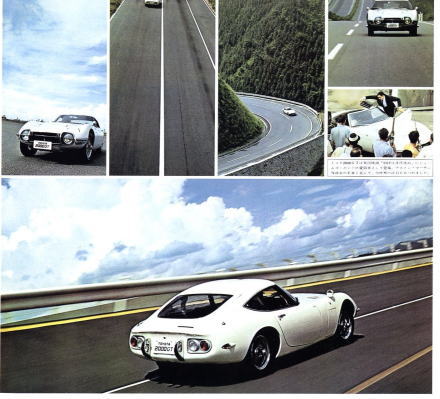
A New Era
To understand the consequence of the 2000GT, we must start three years earlier, in 1964. Japan at the time had finally, after nearly two decades, recovered from the devastation of World War II and begun to prosper. 1964 saw Japan host the summer Olympics, which was considered an enormous honor then. From that event the world saw the its first cross-Pacific television broadcast, as well as the construction and launch of the Shinkansen, the bullet train.
The future capital of the world’s second largest economy was undergoing a modernization boom never before seen in its multi-millennial history. Churning out everything from cameras to cargo ships, the dizzying rate of growth soon thrust Tokyo into the position of world’s largest city. A sense of boundless possibility permeated the air.
May 1964 was also the second running of the Japan Grand Prix. At the first Japan Grand Prix a year earlier, Toyota had swept all three classes it entered with the Publica, Corona, and Crown. In a time when people cared deeply about racing, Toyota immediately used the sweep in advertising and shot to the top of the sales charts. In an otherwise glorious year for Japan, that success would not be repeated in 1964. The Publica was still competitive, but Toyota’s flagship models were taken down by Prince and its Gloria and Skyline. Toyota’s factory racing manager Jiro Kawano was devastated.
Kawano swore to restore Toyota’s pride, and knew that they needed a better weapon to send into battle. It was then that Kawano decided to make development of a world-class, top-level sports car his priority, one whose technological achievements and driving spirit would permeate the company and its future cars.
By November, Kawano had assembled his small, secret team — designer Satoru Nozaki, engine lead Hidemasa Takagi, suspension engineer Shinichi Yamazaki, and test driver Shihomi Hosoya (above) — to begin work on what would be known internally as Project 280A.
An Unlikely Partner
Toyota knew the car would of limited production and would not come down the assembly like like your average Corona. It would only seem natural, then, that Kawano would turn to Kanto Auto Works, the Toyota subsidiary that even today builds specialty cars like the Lexus SC and Century. Toyota had awarded the contract for the 1965 Sports 800 to Kanto, and wanted them to reprise their efforts for the next evolution of Toyota sports cars. For reasons lost to history, this deal never materialized — some say Kanto simply didn’t have the ability to produce an unprecedented high-end car of this type — and for a moment it seemed as if Project 280A was at risk.
At the same time in the neighboring prefecture of Shizuoka, Yamaha was having its own problems. The maker of motorcycles and watercraft has long held the dream of building specialty cars, one that perseveres to this day. In the early years of Japan’s auto industry, however, Yamaha lacked the heavy manufacturing facilities required to be a full-fledged automaker. Instead, president Genichi Kawakami saw an opportunity for Yamaha to become a low-volume coachbuilder, specializing in performance cars for larger automakers.
As it happens, Yamaha had been working on another project with Toyota’s main rival Nissan. Like the 2000GT, the prototype codenamed A550X was designed with a long hood to house an inline-six, built to the limit of the 2.0-liter displacement bracket dictated by the Japanese government. Yamaha’s engine expertise was in the space-age technology of dual overhead cam heads, and Nissan took full advantage of it (keep in mind, this was in the years before the Prince merger, so Nissan did not have access yet to the Prince-developed S20 motor).
Before the project to came to fruition, however, tensions between Nissan and Yamaha killed the deal. Yamaha was now in the unenviable position of finding another partner or completely waste the investments made in their coachbuilding enterprise.
It was a perfect storm. Each company needed exactly what the other could provide. In an interview, Takagi once said that the entire project began when Kawakami nonchalantly asked Toyota president Eiji Toyoda, “なにかいっしょにやりませんか?” (Translation: “So, do you want to do something together?”. The rest is history.
From that December onward, Yamazaki, Takagi and Nozaki were transferred to Yamaha and worked there every Tuesday through Friday until the the project was completed the following April. The first working prototype was built by August 14, 1965, a considerably faster turnaround than what any modern company could achieve today. That October, it was revealed to the world at the Tokyo Motor Show.
A Declaration
The 1965 Tokyo Motor Show represented a significant change to the auto industry not only because Toyota used it as a platform to showcase Japan’s first true world-class car. That very same month, a change to Japanese laws opened the country’s borders to imported cars, and companies feared the coming flood of competition from more e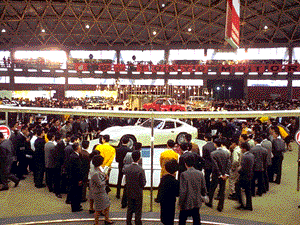 xperienced automaking countries like Britain, Italy, and Russia.
xperienced automaking countries like Britain, Italy, and Russia.
At the time, Japanese products were still considered by much of the world to be inferior, with the phrase “Made in Japan” used to describe cheap goods much like the way “Made in China” would be used today. And because it would be the first Motor Show held after the new laws took effect, a record number of non-Japanese visitors were in attendance. Toyota had to take a stand.
The lucky ones that did make their way to Harumi Showplace saw history unfold. There, at Toyota’s display, perched atop a brightly lit turntable was the gleaming 2000GT. It was painted white, of course, as bright as Japan’s flag and the snows of Mt Fuji. It was low and sleek and gorgeous, and it declared that Japan had finally emerged from its nuclear ashes to challenge the best of the Western world.
The 2000GT wasn’t simply beautiful. Like a Shinkansen locomotive, form followed function as well. The ultra-low profile, just 45.7 inches from the ground, was made possible by a backbone-style frame, with one central beam forking out to a Y at either end. The engine and transmission wedged between the longer arms of the forward branch, while each prong of the rear fork angled upward to accommodate a shock and spring assembly.
The body was draped over the center rail, placing the driver mere inches above the road’s surface, like the second hand sweeping the face of a Seiko Grand. The low center of gravity granted the 2000GT preternatural cornering abilities, challenging motorists to sling it around the cloverleafs of Japan’s rapidly expanding expressway network.
The interior blended Mad Men Sixties elegance with sporting purpose. The dashboard was inlaid with opulent rosewood, cut from the same trees Yamaha used for its grand pianos. In the center of it, a dual-face rally clock kept time with the precision of a Nikon shutter. The plastic shielding the gauges were cone-shaped, so that no sunlight would reflect into the driver’s eyes. Chrome rings as bright as the summer sky in Hokkaido encircled every instrument and switch.
Power flowed from a newly designed 3M motor, built by melding the bottom end of a Crown sedan’s straight-six and a Yamaha-designed twin-cam head. Fed by triple Mikunis, the resulting 150 horses ran through a 5-speed transmission and an unusually short 21-inch driveshaft to the rear wheels.
The 2000GT was a car of many firsts — the first Japanese automobile to with a standard limited-slip differential, the first with an independent double-wishbone suspension, and the first with four-wheel disc brakes. It boasted rack and pinion steering, an aluminum radiator, and the AM radio even had a seek function. These features can be found on the lowliest commuter today, but 50 years ago to have them all in the same machine was Astro Boy-level futurism.
A Stunning Design
There’s at least one aspect of the 2000GT that has no modern equal — the styling. Wind tunnels, computers and safety regulations have changed the game. There will never again be a car, for example, with nominal bumpers that aren’t actually bolstered by the frame, offering no crash protection.
Nozaki was a fantastically talented designer. Every surface, whether metal or glass, was a compound curve, meaning that it bends in at least directions. Yet the steel body was decidedly old school, savagely hammered over wooden bucks at Yamaha.
It is often said of cars that photos do not do it justice. That has never been more true than with the 2000GT. To understand its most striking facet, one must examine the car in person, walk around it, and watch the light dance across its surface. Only then will the creases emerge.
It’s odd, because if one is asked to describe a 2000GT, rounded curves are the first adjectives that spring to mind. Look closely, though, and the razor-sharp edges that form the transitions between surfaces become its defining trait. Starting from the the front fenders, a continuous edge arcs around the body. It’s particularly striking as it crests on the rear haunches, but its most beautiful detail is when it bends around the rear to form a crisp, upturned edge at the tail.
The rest of the car exuded a similar elegance. Nozaki penned another ever-so-slight crease that traveled down the hood’s centerline and terminated in a pointed “T” grille (for “Toyota,” naturally). Nozaki also flanked it with two driving lamps — whose not-quite-round bezels are the design’s only hint of wickedness — to prevent rally car-like add-ons from blemishing the purity of the shape.
Even its most derided cue, the fender access panels, look vaguely mechanical and Japanese, possibly a compartment concealing the hands of a 20-foot transforming robot. Disappointingly, they merely house battery on one side, the wiper fluid reservoir on the other.
Perhaps the most enduring cue Nozaki bestowed upon the 2000GT was its C-pillar treatment. The window tapering to a point was called at the time (politically incorrectly) the “Chinese eye.” Five decades later, that shape has since been revived on everything from the Scion FR-S to the Lexus LC, all paying homage to the Toyota that started it all.
A Purpose Fulfilled
Before the 2000GT even reached showrooms, Toyota sent it into battle. It was Kawano’s aim to race all along, and now he finally had his car. Its first high-profile challenge was the 1966 Japan Grand Prix, and as pre-production 2000GTs toured the auto shows circuit, two aluminum-bodied racing versions duked it out at Fuji Speedway. Unfortunately, victory eluded them and once again, it was Prince that took the top spot. The best the 2000GT could manage was third, behind a pair of newly developed R380s, Prince’s purpose-built mid-engine race car.
It wasn’t until its next race, the Suzuka 1000km, that the 2000GT found its true calling. Toyota’s flagship was developed as a GT, and its abilities were demonstrated in endurance racing rather than sprints. The 2000GT took home its first trophy there, and would go on to win several more enduros, most notably the Fuji 24 Hours.
However, the pinnacle of the 2000GT’s motorsports endeavors was the 1966 Speed Trial at Yatabe. This was not a race, but a solo all-out run at top speed over 78 hours and 10,000 miles for the express purpose of setting new records. With an average speed of 206.18 kph, the yellow and green prototype broke 3 world and 13 international speed records, even despite a track-drenching typhoon in the middle of the three-day run.
A Dream Achieved
Toyota wrote up the newly set records in advertisements and circulated them heavily, and in May 1967 the Toyota 2000GT went on sale. It received instant and universal praise.
In June 1967 Road & Track, who put the 2000GT on the cover of its 20th anniversary issue, wrote, “When it comes to ride and handling, nobody in his right mind could need or want more in a road vehicle… The excellence of the rear suspension made itself known at the drag strip, too. We tried various engine speeds before the usual clutch-dump and found that regardless of technique the rear wheels simply spin, evenly and smoothly.”
Motor Trend in May 1968: “Obviously the 2000GT isn’t a drag machine, but it can surely hold the road with any iron cradling a powerplant with double or triple the displacement… Cornering is effortless and smooth. On long winding bends, or short, sharp curves, aim it and the 2000GT does the rest. Even bumpy roads and dips have no effect on the ride or handling qualities.”
Editors at Car Life discovered that “At breakaway speeds the 2000GT is beautifully balanced… Four-wheel drifts can be set up, controlled and ended with either steering wheel or throttle.”
Sadly, despite the rave reviews, Toyota only managed to sell 337 of them before production ended in 1970 (a few prep-production prototypes and race models up the total to 351). Over the years, many reasons have been given for its rarity. At ¥2.38 million, it cost double the price of a luxury Crown sedan and six times as much as a Corolla. The average salary of a college graduate in Japan in 1967 was ¥26,000.
Translated to US dollars the sticker was about $7,200, more than the price of a Porsche 911 at the time. It didn’t help either that Porsche unveiled a faster 911S two years later. The 2000GT was likely unsustainable anyway, as it was rumored that it cost Toyota ¥5 million to build each one.
The biggest downfall for the 2000GT, however, was its name. Seven grand was a steep price to be asking, especially when there was still a pervasive stigma about Asian-made goods. Toyota had only begun selling cars in the US a scant 10 years earlier, and its first efforts with the rather agricultural Toyopet Crown were less than successful. In truth, the 2000GT was not only technologically, but culturally, ahead of its time.
A Line Drawn
For much of the 20th century, the Toyota 2000GT was a footnote in automotive history. As interest in Japanese nostalgic cars has increased beyond its home country, though, its prestige has increased dramatically. In the 10 years since we published our first 2000GT story, its value has increased from about $200,000 to an astounding $1 million. In the meantime, Toyota has even reprised the 2000GT in a second act as the Lexus LFA.
Today, it seems foolish that anyone could’ve doubted Toyota’s ability to create a world-class supercar. In fact, much frustration directed towards the automaker is that it stubbornly refuses to do so, even when it clearly has the ability.
Still, the 2000GT’s true value is not in what it fetches at auction. It’s in what it represents. A massive industrial transformation was under way in Japan. The country was finding its footing on the world stage, and its people would no longer settle for two-stroke compacts. The 2000GT made the statement, to both Japanese citizens and those of the world, that change was underway. It was a turning point, announcing that Japan’s auto industry had arrived. And, it gave future Toyota engineers a beacon, something to strive for as they went about creating the Truenos, MR2s, Celicas, Soarers, Supras, and Lexuses to come.
Some images courtesy of Toyota.



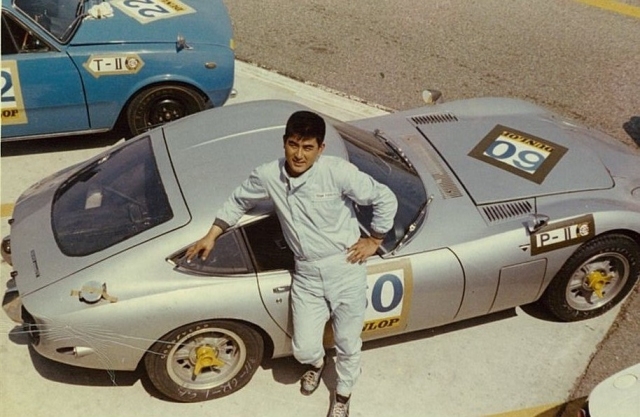
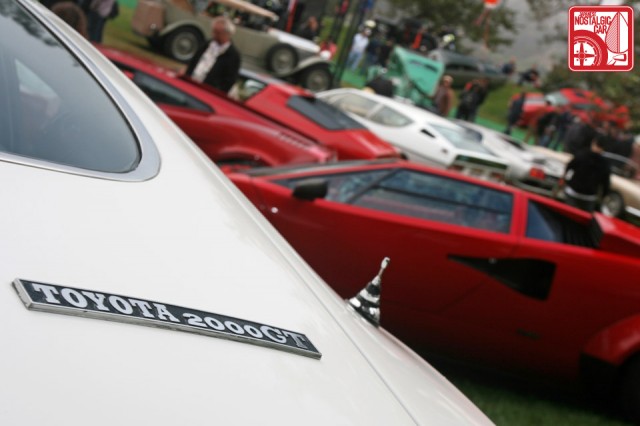




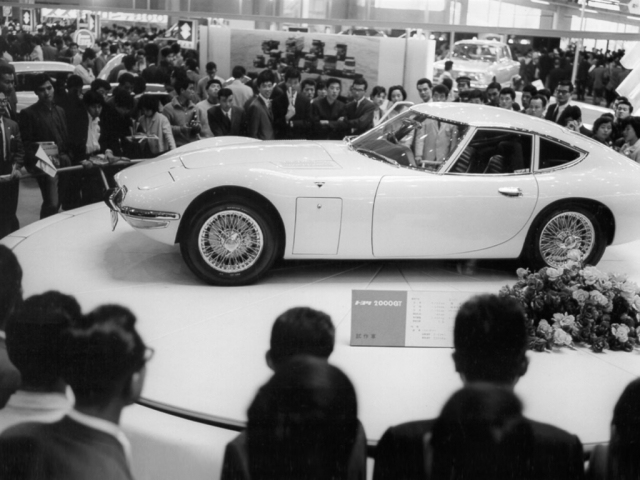
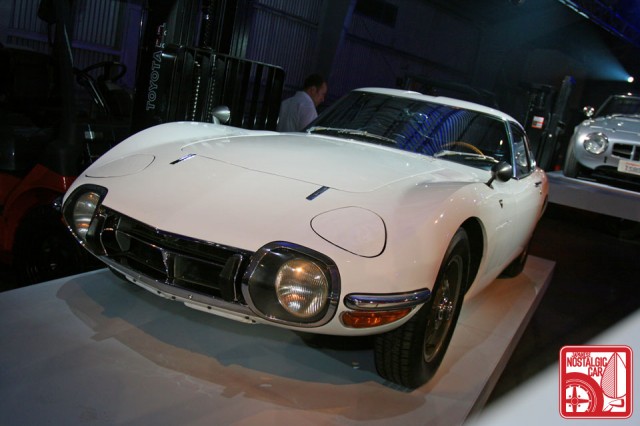


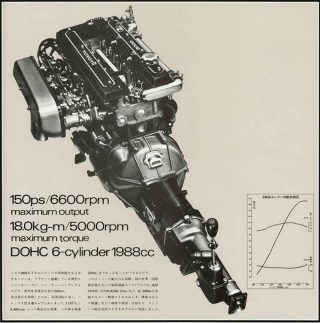

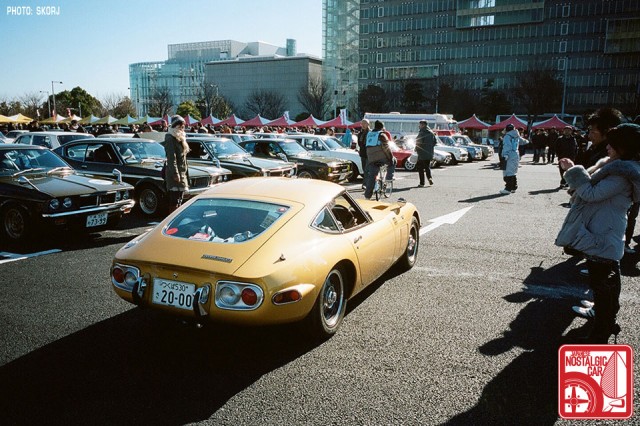





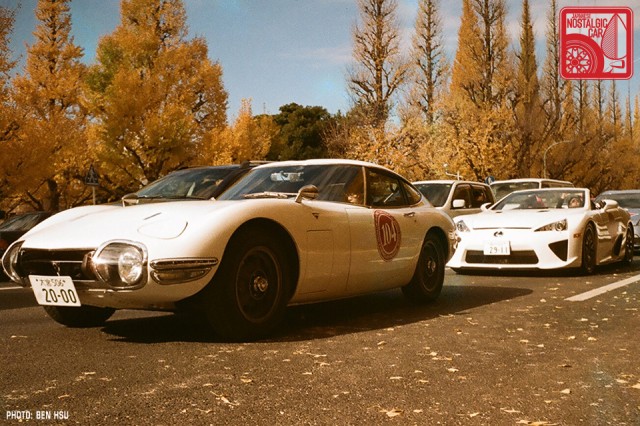
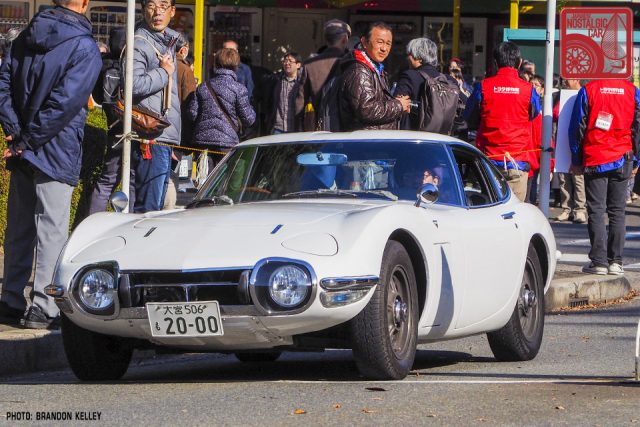
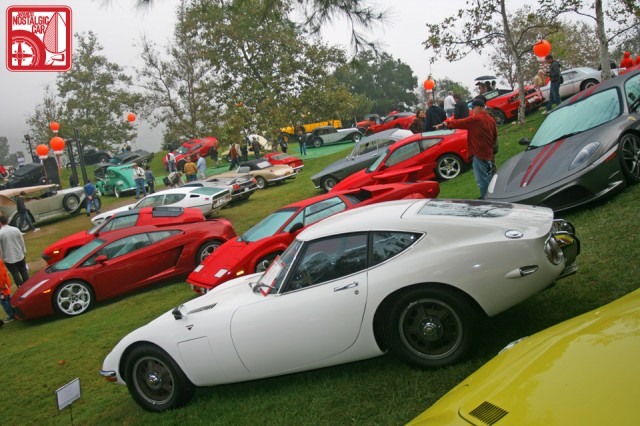
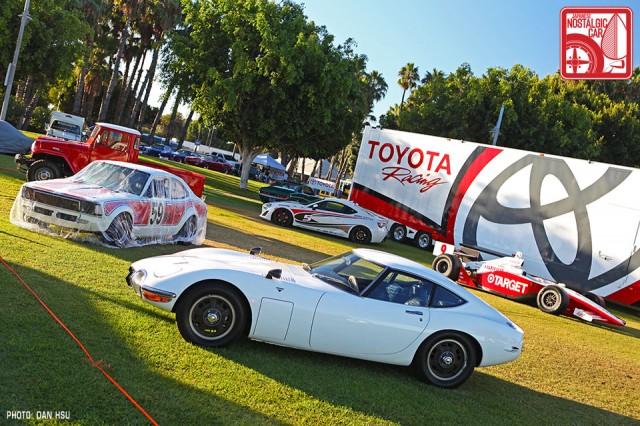




The 2000 GT was a real game changer, and to this day remains one of the stars in the automobile collectors eyes… not the fastest of period sports cars but certainly quick enough with a brilliant exhaust note… one of the all time greats on so many levels. I do not think I could ever tire of endless gazing at the incredible styling… 50 years later it is so obvious that Toyota so got this one right.
Great Article JNC, well put together!!
The 2000GT is my holy Grail of JNC’s. I remember the first time I saw it and heard that amazing exhaust note in James Bond You only Live twice, I saw that movie in the early 90’s when I was just getting into cars. What a flagship car to represent Japan and the Japanese Bond Girl that accompanied 007 in that movie. From the driving lamps with the glass clovers and pop up lights and wire wheels and how sleek it looked evading the bad guys in the movie did me in. Even though they never made a convertible 2000GT, it was said that Sean Connery was too tall for the roofline in the 2000GT. The directors and production company didn’t want to find another suitable car so they had to “cut it off” to accommodate him in it, you can actually tell in the movie. I was also told Sean Connery has this very same 2000GT I’m not sure if that is true or not.. JNC can probably confirm that tall tale!
I spend more time taking pictures of this car at JCCS every year I go and love just gazing at its state of the art engineering for its time. It reminds me of the SR-71 Blackbird for the Japanese auto industry. Sleek, fast, and ahead of its time. I recommend anyone who hasn’t had the opportunity to check one out or sit in one, please do! If you are a Toyota head like me spending some with this car should be on your “to do list”
The 2000GT is even in the Bond movie poster
http://3.bp.blogspot.com/-XqdALoKCEB0/UPJeLVEjk4I/AAAAAAAABwM/Oc0LdpyN6bw/s1600/James+bond+5-+You+only+live+twice+(1967)_9.jpg
The 2000GT, along with Nancy Sinatra’s theme song, were the most memorable things about that movie. I’ve read that the producers wanted Bond to be seen at all times, which is why they but the roof off.
As far as I know, there were two convertibles made for the movie. One is in Toyota’s collection and the other is privately owned by a collector in Japan. Others have chopped up 2000GTs over the years to recreate the convertible, but I’m sure thet regret the decision now that they’re selling for $1 million.
Click the link: This is the James Bond 2000GT.
as you are a fan of this car i have a air fix model that i built back in the early 70s do you know any one who may be interested in buying it it is 50 years old but is in good order been in cabinet allthis time
The Toyota 2000GT is truly one of the best-looking, best sounding classic cars. Period. There can be no debate. There is a pantheon that houses such greats in this category as the Ferrari 250 GTO and early variants of the Jaguar E-Type. Needless to say, the 2000GT shares a place there.
Come for the visuals, stay for the exhaust note!
I guess I was 9 years old when my dad took me to the theater in Tokyo to go see a James Bond movie. I sat there a bit puzzled as to why Bond was in Japan. Then there it was… a 2000GT tearing up the Izu Penninsula. Even as a kid, I thought whoa, Japan has really arrived.
Interesting that Yamaha was involved. I have always wondered why they never embraced production cars. I love the Sport Ride & the OX-99. Wouldn’t it be great to see thier version of a KTM X-Bow?!
There was a time, when even a 2000GT was a “regular”: car. Back in 1979, me and a friend went to the Riverside 6-hour, and in the dirt parking lot, parked along with the rest of the ordinary cars, was a Toyota 2000GT. I immediately became and parked my TE27 1974 Corolla SR-5 next to it. My friend was also impressed, he had a TE37.
Loudest race car? Not the Porsche 917-30 (as a demo), but the race GTU RX-7s (who finished behind a Datsun 280ZX)
What a great write up!
Thanks!
“Takagi once said that the entire project began when Kawakami nonchalantly asked Toyota president Eiji Toyoda, ‘なにかいっしょにやりませんか?’ (Translation: ‘So, do you want to do something together?’. The rest is history.”
Its really funny to think that this all started with one simple and casual question, even considering how much Toyota and Yamaha have worked together for decades later.
I mean, almost all of Toyota’s more modern killer engines (4ag, 3sg, 2jz, etc.) they all have “Yamaha” stamped on them.
i have a air fix model of a toyota 2000gt made in the early 70 is any one interested in buying it
Christopher, I’d be interested in seeing some pictures. Please email me at s.scot.worley at gmail.com Thanks